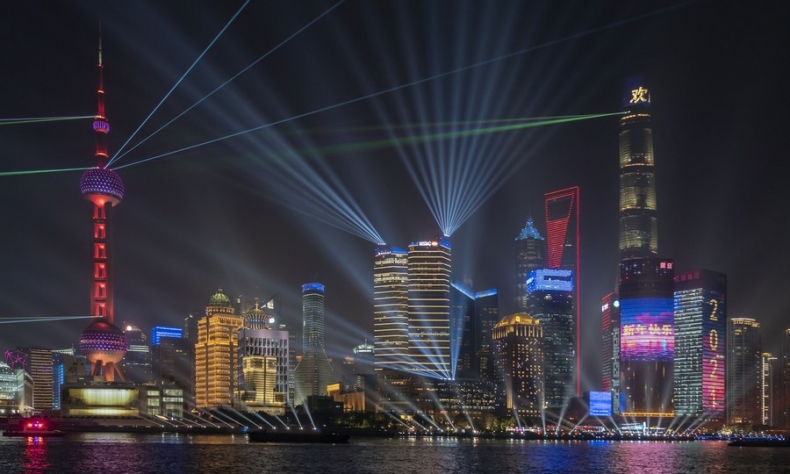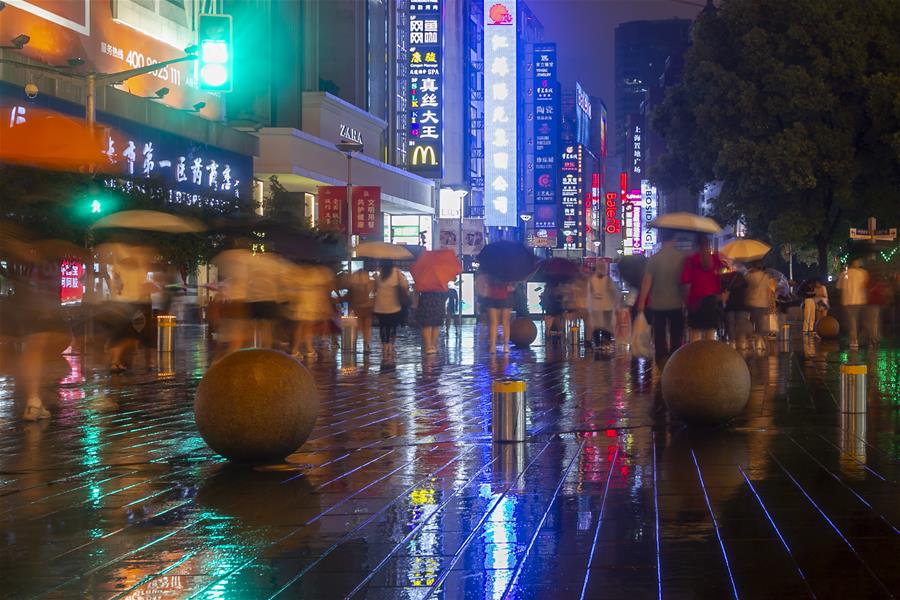Let There Be Legal Light

Shanghai’s amended regulations provide a legal template for nationwide light pollution management.
Light is a symbol of civilization and hope. In modern times, colorful lights, particularly solar lamps, are a testament to the scientific and technological progress of human society. But excessive lighting can pose dangers to both human health and the environment.
The newly amended Regulations of Shanghai Municipality on Environmental Protection became effective on August 1. Newly added content on the prevention and treatment of light pollution makes this guideline China’s first local environmental protection law to include light pollution.
Light pollution, also known as photo pollution or luminous pollution, is excessive, misdirected or obtrusive artificial light that today has joined the ranks of wastewater and noise pollution.
This source of contamination was pinpointed in the West as early as the 1930s. Countries like Sweden and Britain have long established national or local regulations covering light pollution. The year 1988 even saw the incorporation of the International Dark-Sky Association, a United States-based nonprofit organization working to protect the night skies for present and future generations.
In China, light pollution came under the spotlight only in the past decade, mainly in megacities like Beijing and Shanghai, and the country still lacks relevant national legislation. Although cities like Beijing, Shenzhen and Hangzhou have issued regulations on lighting facilities or landscape lighting, these are neither legally binding nor do they feature agreed standards and explicit penalties.
Shanghai’s amended regulations provide a legal template for nationwide light pollution management. It contains explicit regulations on all types of sources, corresponding punishments, and guidelines on which authorities should bear responsibility for the issue.

However, the management should not rely on legal means alone; the application of scientific approaches is equally important. While trying to reduce or eliminate this particular contamination, the impact of doing so on the country’s economic growth, too, is a key factor.
By international criteria, light pollution falls into four categories. Glare, or excessive brightness that causes visual discomfort; skyglow, or the brightening of the night sky over inhabited areas; light trespass, or light falling where it is not intended or needed; and clutter, or bright, confusing and excessive groupings of light sources.
To large extent, any type of light pollution serves as an indicator of any given local industrial level. For example, a look at our planet at night shows the bright glow of economically developed areas, whereas underdeveloped regions remain shrouded in darkness.
In terms of sky glow and clutter, legal means can effectively help tackle the issue. Normal business operations should entail brightness limitations, and light directions can be adjusted. A more rational design of urban construction and better management of evening lighting can also prove helpful, like by banning powerful light sources and laser equipment as well as standardizing reflection coefficients. Light trespass, then, can get a helping hand from science and technology. Matt wall decoration materials can replace glass walls and glazed tiles, preventing excessive luminous pollution. As for existing glass walls, light absorption structures may offer a solution. This way, economic activity will not be overly disrupted and light pollution is curbed to the largest possible extent.
Shanghai’s amended regulations provide a legal template for nationwide light pollution management. It contains explicit regulations on all types of sources, corresponding punishments, and guidelines on which authorities should bear responsibility for the issue.
 Facebook
Facebook
 Twitter
Twitter
 Linkedin
Linkedin
 Google +
Google +










